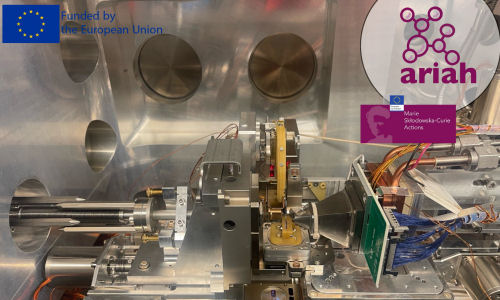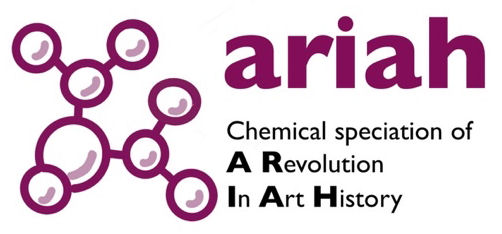 We have accomplished a successful four-day series of scanning transmission x-ray microscopy experiments, focusing on the analysis of 100 nm ultrathin sections extracted from the “Triptych of San Francesco”, created by the Italian Renaissance painter Carlo Crivelli (c. 1430-1495). This effort is a vital element of the EU-funded project ARIAH, made feasible with the assistance and support provided by the synchrotron facility SOLEIL. Throughout the experiments, the MSCA fellow, Rafaella Georgiou along with PhD student Giulia Carotti from the University of Pisa, Professor Uwe Bergmann from the University of Wisconsin-Madison, and HERMES beamline scientist Stefan Stanescu, acquired nano-spectral images at characteristic the carbon and nitrogen K-edge. This approach aimed to unveil the chemical nanostructure of paint layers and establish connections between these structures and the composition and formulation of the paint. This method allows us to investigate the nanoscale chemical distribution of complex organic mixtures (e.g., proteins, oils) within Renaissance artworks, the formation of carbon bonding at a local level due to their interactions, and how various pigments influence these phenomena.
We have accomplished a successful four-day series of scanning transmission x-ray microscopy experiments, focusing on the analysis of 100 nm ultrathin sections extracted from the “Triptych of San Francesco”, created by the Italian Renaissance painter Carlo Crivelli (c. 1430-1495). This effort is a vital element of the EU-funded project ARIAH, made feasible with the assistance and support provided by the synchrotron facility SOLEIL. Throughout the experiments, the MSCA fellow, Rafaella Georgiou along with PhD student Giulia Carotti from the University of Pisa, Professor Uwe Bergmann from the University of Wisconsin-Madison, and HERMES beamline scientist Stefan Stanescu, acquired nano-spectral images at characteristic the carbon and nitrogen K-edge. This approach aimed to unveil the chemical nanostructure of paint layers and establish connections between these structures and the composition and formulation of the paint. This method allows us to investigate the nanoscale chemical distribution of complex organic mixtures (e.g., proteins, oils) within Renaissance artworks, the formation of carbon bonding at a local level due to their interactions, and how various pigments influence these phenomena.
Special thanks to the HERMES beamline scientist Stefan Stanescu for his valuable help!







